The many consequences of allowing phones at school
The evidence for why we need bell-to-bell phone bans
On Tuesday, I testified at a hearing for the U.S. House of Representatives Committee on Education and Workforce on screentime in schools. The video of the hearing, including the compelling testimony of the other witnesses, is here (scroll down to the second video).
Below is part of my written testimony, some of which is also featured in my upcoming book, 10 Rules for Raising Kids in a High-Tech World (out September 2 and available for pre-order now; Rule #10 is “Advocate for No Phones During the School Day.”) The book also includes a draft letter parents can send to ask their child’s school to ban phones during the school day bell-to-bell. If you’d like to write your own email or letter to the administration at your child’s school, the evidence below should be helpful.
After the hearing in D.C.: Dr. Rich Nye, Dara Gardner, myself, and Dr. Matthew Gibbins
The first smartphone, the iPhone, went on sale in 2007. By 2012, the majority of Americans owned a smartphone. The years since have resembled a vast experiment, especially on children and adolescents. The results of that experiment have been a disaster.
That is especially true in education, where most schools allow students to use their phones during the school day. These lax policies have had devastating consequences for students attending K-12 schools, including increases in loneliness, declines in academic performance, lack of social interaction, exposure to pornography during school hours, discipline referrals, and declines in teacher morale. Below, I detail these consequences with reference to my academic research as well as the research and reports of others. This evidence supports school policies banning student use of phones from the beginning to the end of the school day.
Increases in loneliness at school
The Programme for International School Assessment (PISA) dataset, administered by the Organisation for Economic Co-operation and Development (OCED), surveys large, nationally representative samples of 15-year-old students in countries around the world every three years. Since 2000, they have asked students if they agree or disagree with the statement “I feel lonely at school.” In the U.S. and other English-speaking countries such as Canada and the U.K., the number of students who felt lonely at school doubled or nearly doubled between 2012 and 2018 (Twenge et al., 2021; and see Figure 1 up to 2022).
Figure 1: Percent of 15-year-old students who agree they feel lonely at school, U.S., Canada, and U.K., 2000-2022. Source: PISA. Note: Data collection years were 2000, 2003, 2012, 2015, 2018, and 2022. Question was not asked in the U.S. in 2003.
The surge in loneliness at school is only one example of the enormous increases in adolescent mental health issues since 2012. Clinical-level depression, self-harm, and suicide rates all skyrocketed among U.S. adolescents, especially girls, over the years that smartphones and social media increased in popularity (Twenge, 2020; see Figure 2). In contrast, the trends are completely misaligned with economic indicators such as unemployment.
Figure 2: U.S. teen girls’ rates of clinical-level depression, time spent on the internet, and social media use and U.S. adults’ smartphone ownership and unemployment rate, 2005-2019. Sources: National Survey on Drug Use and Heath; Monitoring the Future; Pew Research Center; U.S. Bureau of Labor Statistics; analyses in Twenge (2025), Generations. Notes: Depression was assessed in a screening survey and thus does not rely on physician diagnoses or treatment seeking. Values are standardized.
Academic performance
Over the same years, the academic performance of K-12 students has also suffered. After rising for two decades, U.S. 8th graders’ scores on standardized reading and math tests declined after 2012 (see Figure 3). Although some of the decline took place during the years of the COVID-19 pandemic, the decreases in academic performance began eight years before the pandemic’s arrival.
Figure 3: U.S. 8th graders’ scores on standardized tests in math and reading, 1971-2024
Source: National Assessment of Educational Progress (NAEP).
Declines in academic performance in math, reading, and science have also appeared worldwide in the PISA dataset (see Figure 4). These declines also began long before the pandemic, primarily after 2012.
Figure 4: Scores of 15-year-old students worldwide on standardized tests of math, reading, and science, 2003-2022. Source: PISA. Graph by GIS.
Finland was once known for having the best school system in the world. In 2022, teens in Finland admitted to using their devices during the school day for non-school purposes for nearly 90 minutes. Perhaps as a result, the test scores of Finnish students plummeted between 2012 and 2022. In countries such as Japan, where students spend less than half an hour on their phones for leisure during the school day, academic performance has instead stayed steady.
Thus far, I have focused on population-level trends during the smartphone era, which are, by necessity, correlational data rather than experimental data. Experimental data, where participants are randomly assigned to different conditions, can prove causation to scientific standards. Experiments in this area also show that electronic devices, including smartphones, undermine academic performance. For example, several experiments have found that the mere presence of a smartphone reduces attention capacity and cognitive performance (Skowronek et al., 2023; Ward et al., 2017). Students with access to devices during class perform more poorly on tests, primarily because phones are so distracting (Lee et al., 2021). In one experiment, college students were randomly assigned to either hand their phone in or keep it while watching a twenty-minute educational video, a format similar to college lectures. They then took a quiz on what they saw. Students who did not have access to their phones scored 7 percentage points higher on the test than those who kept their phones (Lee et al., 2017). A follow-up study found an even bigger difference—those without access to their phones scored 13 percentage points higher on the test (Mendoza et al., 2018).
Phone bans appear to be an effective solution. A study of Norwegian middle schools found that smartphone bans led to improved academic performance, less bullying, and better mental health, especially for girls (Abrahamsson, 2024).
Even the use of electronic devices for educational purposes reduces academic performance. Several studies have found that reading on paper leads to significantly better reading comprehension than reading digitally (Delgado et al., 2018). U.S. fourth and eighth graders who spent more time using digital devices in language arts classes performed worse on reading tests (Salmeron et al., 2023). College students who took handwritten notes were 58% more likely to get A’s in college courses than those who typed notes on laptops, and those who typed notes were 75% more likely to fail the course than those who handwrote notes (Flanigan et al., 2024).
Digital homework can also cause issues. One study observed middle school, high school, and college students studying in their homes. Students lasted an average of six minutes studying on their laptops before they started browsing social media or texting. Even with someone observing them, students spent a third of their “study” time not studying – and that was before social media used sophisticated algorithms (Rosen et al., 2013). Distraction can be an issue even with school-issued devices. Many school-issued laptops allow access to YouTube, which can make it difficult for young students to focus on their homework instead of watching short video content.
Lack of social interaction
The consequences of phone access go beyond the classroom. When students are able to use their phones during lunch and breaks, many choose to do so rather than talk to their classmates. Russell Shaw, the head of Georgetown Day School, described seeing students look at their screens instead of fully engaging with one another. “I’ve watched students who struggle to make friends not learn how to, because they can retreat into the short-term safety of their phones rather than tolerate the discomfort that often precedes finding one’s way into a conversation,” he writes (Shaw, 2024). “Phones teach our students to abandon the eyes of the person they’re speaking to in order to glance at a newly arrived text or Snapchat message.”
The lack of social interaction at school has also been accompanied by a decline in teens socializing outside of school. In 2000, 47% of U.S. 10th graders got together with their friends informally almost every day, but by 2017 that was down to 26%. High school seniors in 2017 spent an hour less a day socializing and going to parties than high school seniors in 1987. The decline in in-person socializing also coincided with a sharp increase in the number of teens who felt lonely and left out (Twenge et al., 2019).
Exposure to pornography during school hours
A Common Sense Media survey found that nearly one out of four teens watched pornography during the school day. Half of those said they used a school-issued device to do so (Robb & Mann, 2023). Thus, not only are minors consuming pornography during school time, but other students can be inadvertently exposed to this adult content at school when students have access to their phones during the school day. My children’s school district in suburban San Diego allows students to access their phones during the school day. My eldest daughter, who just graduated from high school and is now in the Navy, sat behind a boy in a high school class who was watching pornography on his phone.
More discipline referrals
Many student discipline issues are precipitated by texts and social media posts students receive during the school day. In a rural district in Colorado, more than half of the school’s disciplinary issues were due to phones, including incidents of cyberbullying, recording fights, and students taking videos of classmates in bathrooms without their permission (Jargon, 2024a).
School districts that have banned phones during the school day have reported large declines in discipline referrals. When the North Adams school district in Massachusetts banned phones during the school day, discipline referrals dropped a stunning 75% (Banjeri, 2025). A Connecticut high school reported a 35% decline in suspensions and a 50% drop in students getting sent to the principal’s office after requiring students to place their phones in a locked Yondr pouch during the school day (Cross, 2024; Rohn et al., 2024).
Declines in teacher morale
Mitchell Rutherford taught biology at a public high school in Arizona for eleven years. Students’ phones were not supposed be out during class, but it was up to teachers to enforce that policy. A few years ago, students would put their phones away when he asked, Rutherford says. “Now, you can ask them, bug them, remind them, and try to punish them, and still nothing works,” he said. He quit his teaching job (Jargon, 2024b).
Minneapolis middle school science teacher Laura Kimball taught in a school with a similar policy. “Every day is a constant struggle against cellphone usage,” she said. She, too, quit her job (Kimball, 2023).
Seventy-two percent of high school teachers say that students being distracted by their phones in the classroom is a major problem (Lin et al., 2024). “We’re competing with Netflix, FaceTime, texting. They’re even watching March Madness!” said Missouri science teacher Noelle Gilzow (Walker, 2024). The vast majority of American teachers—83%—support prohibiting student phone use during the entire school day (Walker, 2024). “I don’t want to be the phone police. I want to teach,” said California high school art teacher Devon Espejo (Walker, 2024).
If school policy says phones are allowed everywhere but classrooms, teachers have to spend class time chasing students off phones or decide to not enforce the rule. “If the policy isn’t clear and consistent at school, you get a slippery slope,” Gilzow said (Walker, 2024). “You have the ‘cool’ teacher who lets me use my cellphone in class. And then there is the ‘mean’ teacher who does not. . . . it sets up a bad dynamic, an unhealthy culture in the building.”
Counterarguments
When I give talks at K-12 schools around the country, school principals tell me that they get the most resistance to phone bans not from students but from parents. Some parents are concerned about contacting their students during emergencies. In particular, they often say they would want to contact their student if there was a school shooting. However, school safety experts agree that students having phones during a shooting is actually more dangerous, for at least four reasons: 1. Students might miss important instructions during an emergency situation if they are distracted by their phones. 2. Noise from phones may alert shooters to where people are hiding. 3. Too many people trying to text or call at the same time from the same location can tie up bandwidth and keep authorities from communicating. 4. Although it sounds comforting that students could contact their parents during a shooting, parents will then rush to the school, creating traffic congestion that can keep police and ambulances from getting through. For all of these reasons, it is actually safer if students do not have their phones during an active shooter situation (Chuck, 2024; Kelly, 2022; Kyle, 2024; Murray, 2024).
What about the idea that students need to use devices to develop twenty-first-century skills? The problem is technology is constantly changing. As Everyschool founder Amy Tyson points out, a child starting school in this decade won’t retire until the 2080s. We cannot predict how digital tools will change, but we can predict that our kids will need good attention spans and social skills, and electronic devices undermine both (Tyson, 2024).
Conclusions
The smartphone era has coincided with increased loneliness at school, declines in academic performance, students spending less time interacting face to face, exposure to pornography during school hours, discipline referrals due to electronic communication and unauthorized filming, and undermined teacher morale. Experimental studies confirm that access to phones compromises academic performance. The most straightforward solution is a policy of no student access to smartphones during the school day. School policies around other technology, including laptops, should also be considered. For the sake of our children’s mental health and learning, the vast natural experiment of phones in schools must come to an end.
References
Abrahamsson, S. (2024). Smartphone bans, student outcomes, and mental health. Norwegian Institute of Public Health.
Banerji, O. (2025, February 4). What schools look like without the cellphone distraction. Education Week.
Chuck, E. (2024, September 7). Lifeline or distraction? Georgia shooting reignites debate over cellphones in schools. NBCNews.com.
Cross, A. (2024, August 19). UConn study examines benefits of school phone bans. Government Technology.
Delgado, P., Vargas, C., Ackerman, R., & Salmerón, L. (2018). Don’t throw away your printed books: A meta-analysis on the effects of reading media on reading comprehension. Educational Research Review, 25, 23–38.
Flanigan, A. E., Wheeler, J., Colliot, T., Lu, J., & Kiewra, K. A. (2024). Typed versus handwritten lecture notes and college student achievement: A meta-analysis. Educational Psychology Review, 36.
Jargon, J. (2024a, April 20). Schools want to ban phones. Parents say no. Wall Street Journal.
Jargon, J. (2024b, May 18). A teacher did all he could to keep kids off phones. He’s quitting in frustration. Wall Street Journal.
Kelly, H. (2022, June 1). Even after shootings, experts warn against cellphones in schools. Washington Post.
Kimball, L. (2023, June 20). I’m leaving Minneapolis schools over cellphone chaos: Students can’t learn without enforceable rules and consequences. Minneapolis Star-Tribune.
Kyle, M. (2024, May 9). Schools and cellphones: The added danger they can pose in emergency situations. WKYC.com.
Lee, S., Kim, M. W., McDonough, I. M., Mendoza, J. S., & Kim, M. S. (2017). The effects of cell phone use and emotion‐regulation style on college students’ learning. Applied Cognitive Psychology, 31, 360–366.
Lee, S., McDonough, I. M., Mendoza, J. S., Brasfield, M. B., Enam, T., Reynolds, C., & Pody, B. C. (2021). Cellphone addiction explains how cellphones impair learning for lecture materials. Applied Cognitive Psychology, 35, 123–135.
Lin, L., Parker, K., & Horowitz, J. (2024, April 4). What’s it like to be a teacher in America today? Pew Research Center.
Mendoza, J. S., Pody, B. C., Lee, S., Kim, M., & McDonough, I. M. (2018). The effect of cellphones on attention and learning: The influences of time, distraction, and nomophobia. Computers in Human Behavior, 86, 52–60.
Murray, S. H. (2024, June 9). That’s a long half hour for a parent. Slate.
Robb, M. B., & Mann, S. (2023). Teens and pornography. San Francisco, CA: Common Sense Media.
Rohn, K. C., McCready, A. M., Farrell, K., & Elgoharry, A. (2024, August). Addressing student technology and social media use in schools: Recommendations for school district leaders. University of Connecticut Center for Education Policy Analysis, Research, and Evaluation.
Rosen, L. D., Carrier, M. L., & Cheever, N. A. (2013). Facebook and texting made me do it: Media-induced task-switching while studying. Computers in Human Behavior, 29, 948–958.
Salmerón, L., Vargas, C., Delgado, P., & Baron, N. (2023). Relation between digital tool practices in the language arts classroom and reading comprehension scores. Reading and Writing: An Interdisciplinary Journal, 36, 175–194.
Shaw, R. (2024, August 4). Why we’re banning phones at our school. The Atlantic.
Skowronek, J., Seifert, A. & Lindberg, S. (2023). The mere presence of a smartphone reduces basal attentional performance. Scientific Reports, 13, 9363.
Twenge, J. M. (2020). Increases in depression, self-harm, and suicide among U.S. adolescents after 2012 and links to technology use: Possible mechanisms. Psychiatric Research & Clinical Practice, 2, 19-25.
Twenge, J. M. (2025). Generations: The Real Differences between Gen Z, Millennials, Gen X, Boomers and Silents—and What They Mean for America’s Future. Paperback edition. New York: Atria Books.
Twenge, J. M., Haidt, J., Blake, A. B., McAllister, C., Lemon, H., & LeRoy, A. (2021). Worldwide increases in adolescent loneliness. Journal of Adolescence, 93, 257-269.
Twenge, J. M., Spitzberg, B. H., & Campbell, W. K. (2019). Less in-person social interaction with peers among U.S. adolescents in the 21st century and links to loneliness. Journal of Social and Personal Relationships, 36, 1892-1913.
Tyson, A. (2024, October 17). The false promise of device-based education. After Babel Substack.
Walker, T. (2024, October 3). Take cellphones out of the classroom, educators say. NEAToday.
Ward, A., Duke, K., Gneezy, A., & Bos, M. (2023). Brain drain: The mere presence of one’s own smartphone reduces available cognitive capacity. Journal of the Association for Consumer Research, 2.


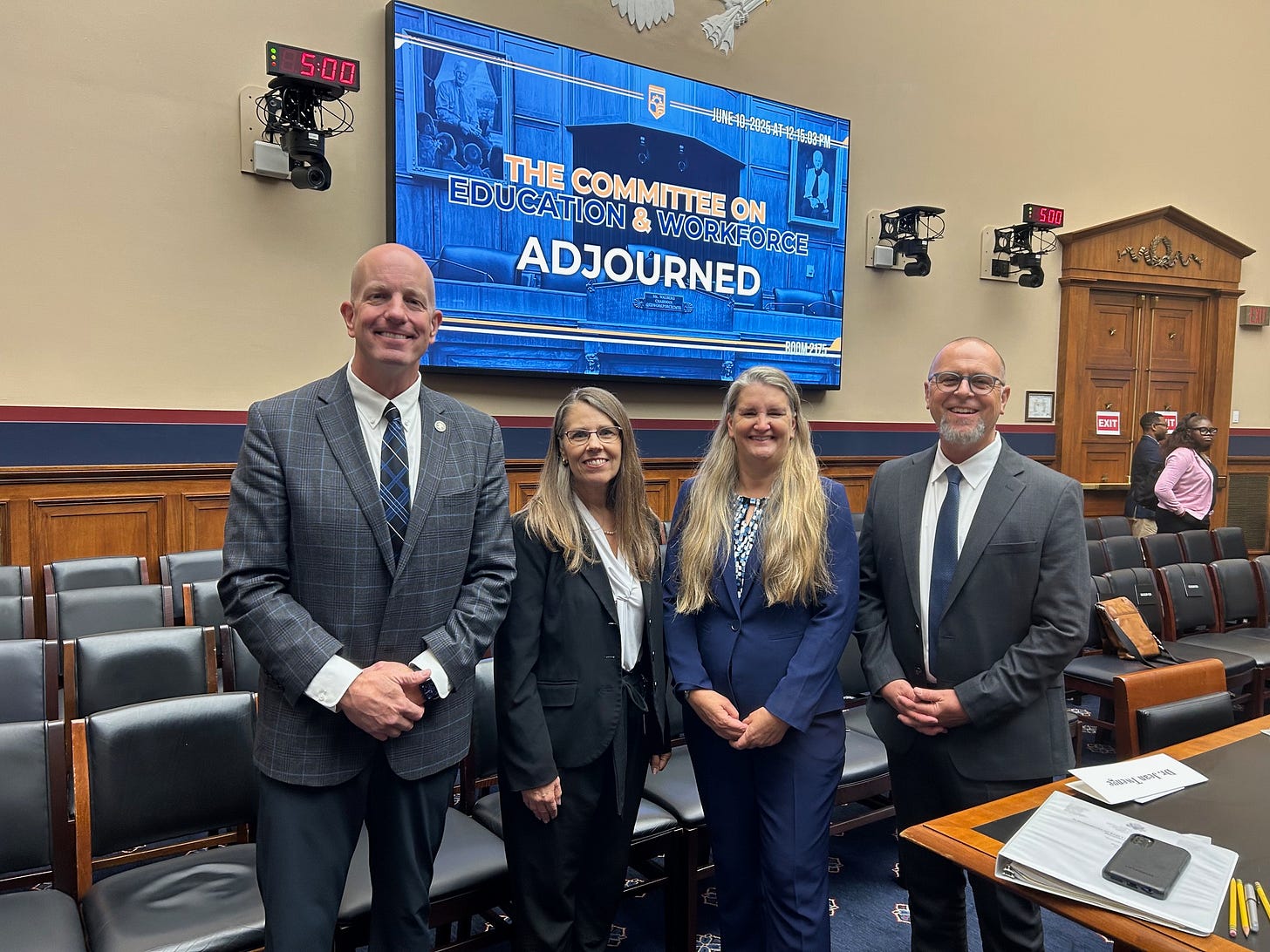
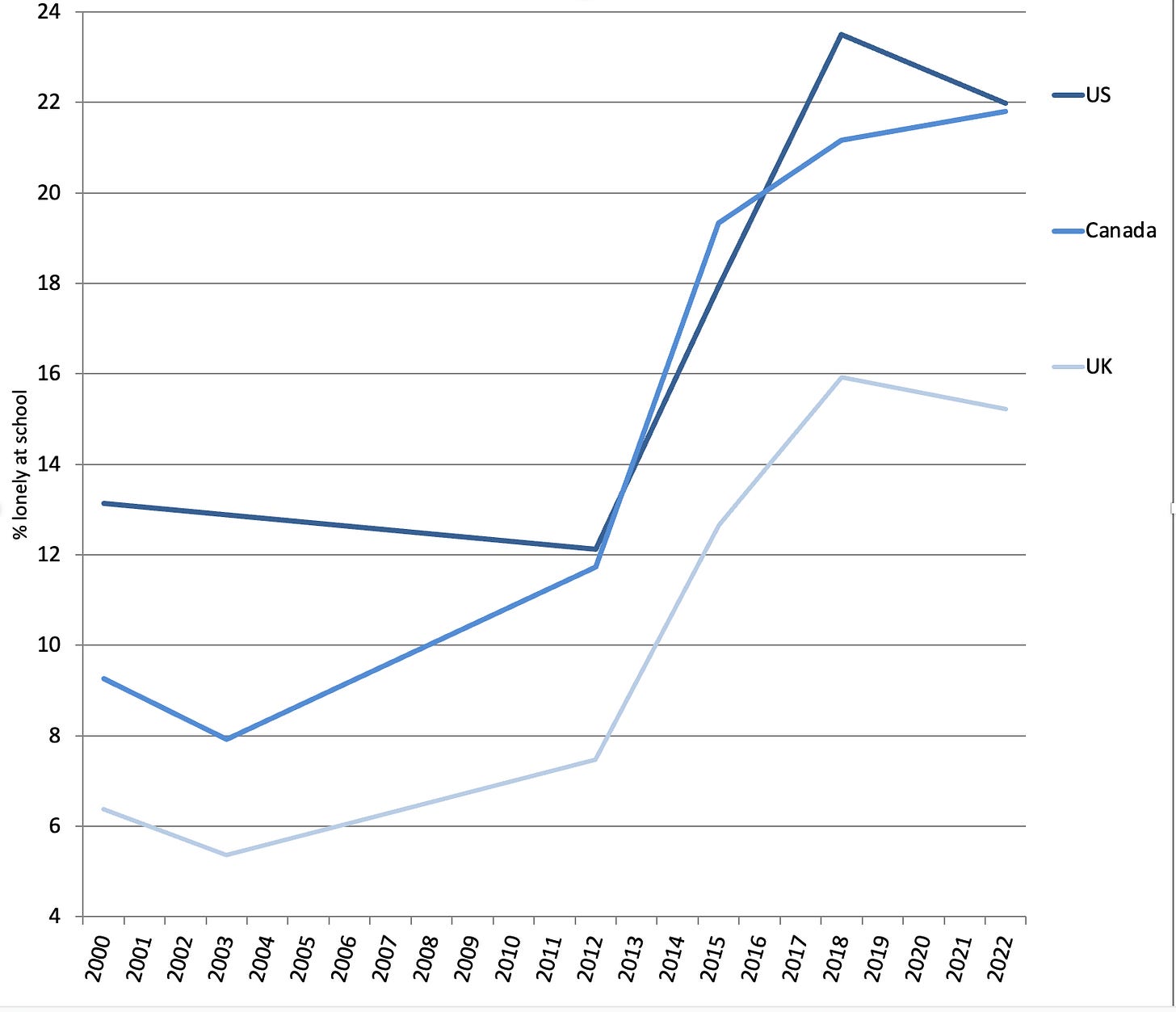
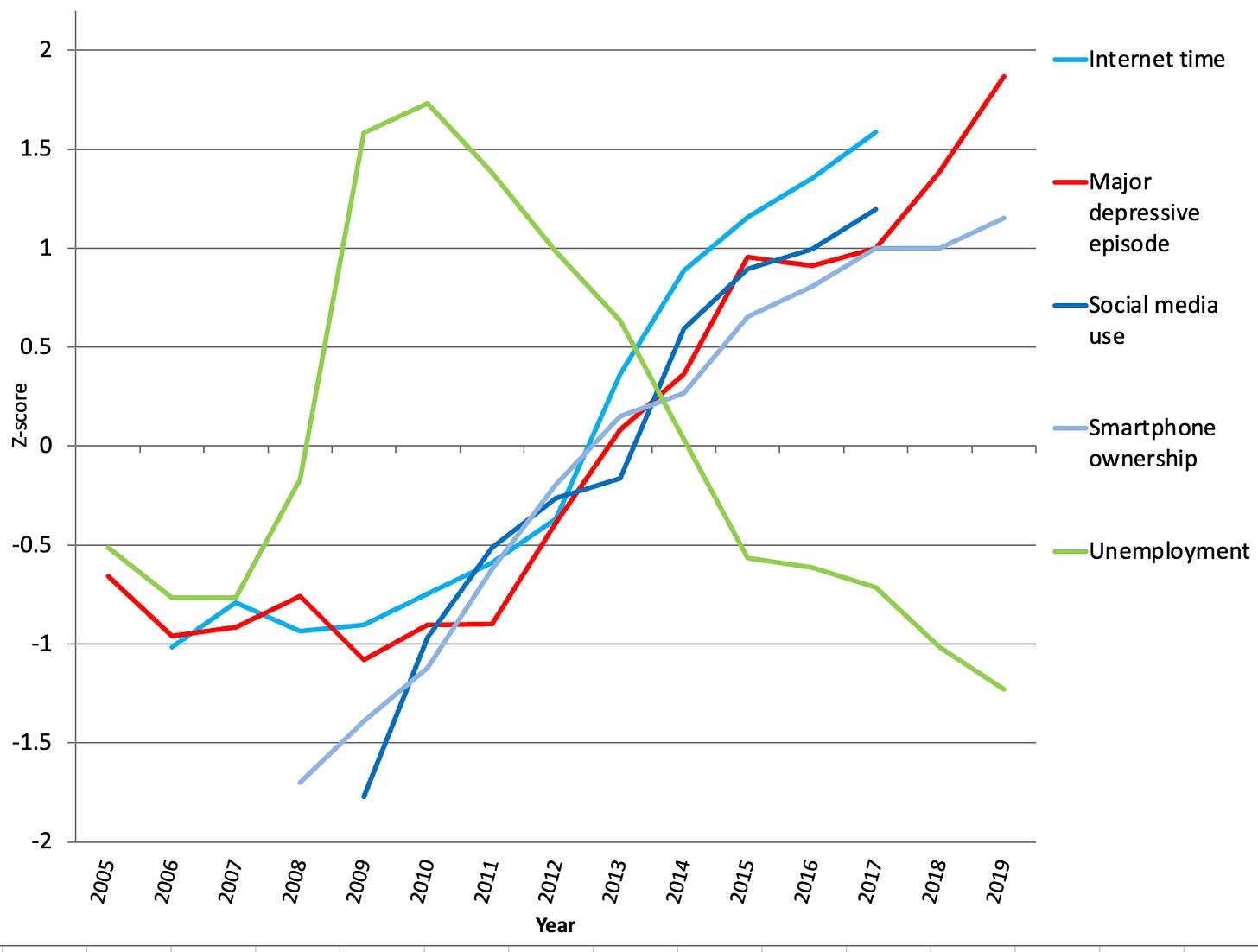
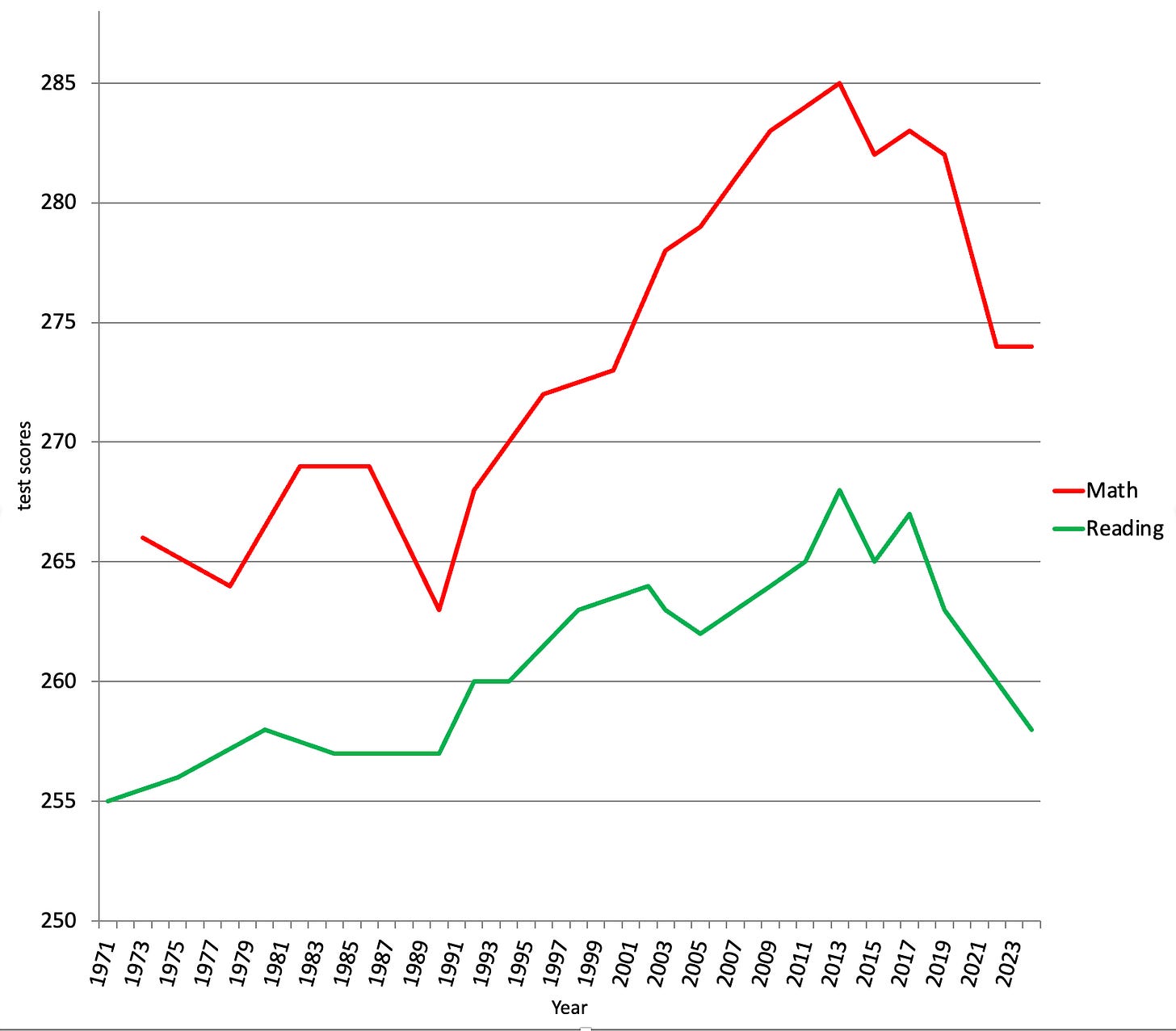
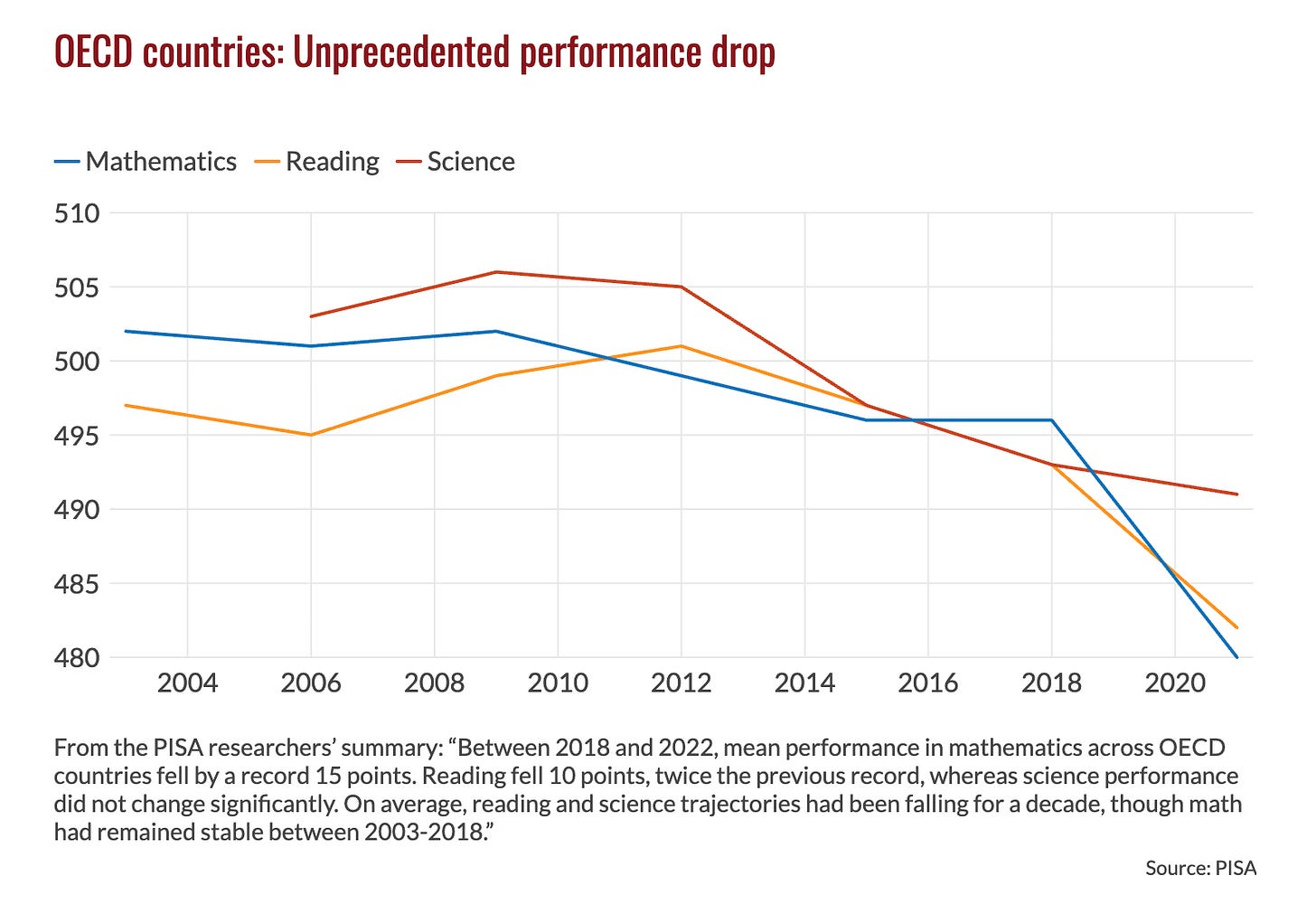
When my high school district tried to do this, parents were up in arms. We have an open campus, and kids can drive at lunch. The big fear was that students might get into an accident and not be able to call home. Another concern, which I found absurd, was that students pay for their lunches with their phones, and how ever could they buy lunch? One father who spoke at the meeting said "When you get sued - and I said 'when', not 'if', you will regret this."